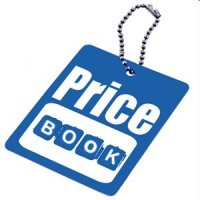At first glance, keeping a Price Book seems like a tedious chore. But by following these simple steps, the monetary return over a period of a few months may prove to be worth the effort. There are many different methods of coming up with your own personal Price Book and in time you will find what works best for you.
Getting Started
Start by saving all of your grocery store receipts. Don't forget to save the "quick-stop" receipts because often those are your "most used" items. Toss the receipts in a drawer or box so that you can begin to build your shopping history.
After you have collected four to five weeks of receipts, your next step is to begin building your Price Book using the information from the receipts.
Purchase a small three-ring notebook or binder. Get something that is not bulky and can be easily taken to the store with you without being cumbersome. You will want to be able to add and remove sheets as you build your book, so a loose leafed notebook is recommended.
Start a sheet for each major category. For beginners, stick to the main items such as, Canned Food, Boxed Food, Fresh Fruits, Vegetables, Meat, Dairy Products, and Snacks. You can always add more later as your book grows.
Create columns for listing your comparison information. You not only want to compare price but also keep track of which store offers that price. A typical sheet will include columns broken down into the following:
| Store Name | Brand/Size | Unit Price | Sale Price | Date of Sale
Referring to your old receipts, fill in the appropriate information. This will be your first step to smart comparison shopping. You will begin to see a "spending-cost history" develop as you log your information. You will also discover where to purchase your favorite items at the lowest price.
When reviewing the weekly sales advertisements, pull out your book to see how good of a deal you are really being offered. Add the best deals, on your most frequently used items, to your shopping list. If possible, buy the item in bulk, so that you can optimize your savings.
Bring your Price Book with you when you shop, to enable you to determine quickly, if an item is at a price incentive good enough for you to purchase.
Continue to save your shopping receipts and use them to update your Price Book for several weeks.
If you do this consistently for several weeks, you will soon be able to determine which stores consistently have the lowest prices on the products you purchase. Remember, no one store can offer the lowest prices on everything. Keeping an opened mind about where you shop and which brand names you shop for will quickly begin to pay off.
The goal in using the Price Book is to help discipline you to not be deceived by advertised specials and to allow you to pay the lowest price for your favorite items. Give it a try. For many people it becomes a great budgeting tool and a fun hobby.
| pricebook.pdf |

 RSS Feed
RSS Feed